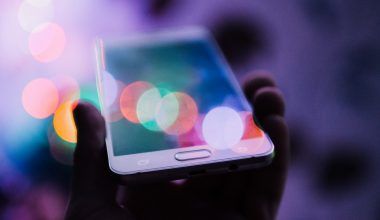Are you a musician or songwriter dreaming of sharing your songs with the world? Selling your song on iTunes is a fantastic way to reach a global audience and earn money from your art. If this sounds like a goal worth pursuing, keep reading! This guide will break everything down into simple steps, so you’ll know exactly what to do.
Why Sell Your Song on iTunes?
iTunes is one of the most popular platforms for buying and downloading music. With millions of active users, it offers a massive audience for your work. Selling your song on iTunes not only helps you earn revenue but also builds your credibility as an artist. Plus, it’s easier than you might think!
Let’s dive into the process and learn how to sell your song on iTunes effectively.
Step 1: Prepare Your Song for Distribution
Before you can sell your music, it needs to be ready for the big stage. Here’s how:
- Record a High-Quality Track: Ensure your song is professionally recorded and mastered. Quality matters when competing with other artists on iTunes.
- Choose the Right Format: Apple prefers music files in WAV format with a bit depth of 16 or 24 bits and a sample rate of 44.1 kHz.
- Create Album Art: Even if it’s a single, having eye-catching cover art makes a difference. The artwork should be 3000×3000 pixels and saved as a JPEG or PNG file.
By focusing on these details, your music will look and sound its best. This is a crucial first step in learning how to sell your song on iTunes.
Step 2: Choose a Music Distribution Service
Apple doesn’t let independent artists upload songs directly to iTunes. Instead, you’ll need a music distributor. These platforms act as middlemen, helping you get your music on iTunes and other streaming services like Spotify or Amazon Music.
Here are some popular distributors:
- TuneCore
- DistroKid
- CD Baby
- Amuse
- Ditto Music
Each service has its own pricing and features, so take your time to compare. A good distributor is key to selling your song on iTunes without hassle.
Step 3: Register Your Music for Royalties
Want to get paid every time someone buys or streams your song? Then you need to register your music for royalties. This involves:
- Joining a Performing Rights Organization (PRO): Sign up with organizations like ASCAP, BMI, or SESAC to collect royalties for public performances.
- Getting an ISRC Code: An International Standard Recording Code (ISRC) is a unique identifier for your song, required by most distributors.
- Setting Up a Publishing Account: If you wrote the song, you might want to set up a publishing account to collect additional royalties.
Taking these steps ensures you’ll earn what you deserve as your music reaches more listeners.
Step 4: Upload Your Song to the Distributor
Now that everything’s ready, it’s time to upload your track. Most distributors have user-friendly dashboards where you can:
- Add your song’s details (title, artist name, genre).
- Upload the audio file and album art.
- Set a release date.
- Choose additional platforms for distribution.
Make sure all the information is accurate, as this is what listeners will see when they find your music on iTunes.
Step 5: Set Your Price
When selling your song on iTunes, you’ll have the option to set a price. Typically, singles are priced between $0.69 and $1.29. Think about your target audience and competition when deciding.
Step 6: Promote Your Music
Once your song is live, the work doesn’t stop there! Promoting your music is crucial for driving sales. Here are some ideas:
- Leverage Social Media: Share posts on platforms like Instagram, Twitter, and TikTok to reach your fans.
- Email Your Subscribers: If you have a mailing list, let your subscribers know your song is available.
- Collaborate with Influencers: Partner with social media influencers to expand your reach.
- Run Ads: Platforms like Facebook and YouTube offer affordable advertising options.
A well-executed promotion strategy can make all the difference in how your song performs.
Step 7: Monitor Your Sales
Most distributors provide analytics tools that allow you to track your song’s performance. Pay attention to:
- Download numbers
- Revenue generated
- Geographic locations of your audience
This data is invaluable for refining your approach and planning future releases.
Conclusion: Take the Leap
Selling your song on iTunes might feel overwhelming at first, but with the right preparation and tools, it’s entirely achievable. Remember, every successful musician started somewhere. By following these steps, you’re well on your way to sharing your music with the world and making a living from your art.
Related Articles:
For further reading, explore these related articles:
For additional resources on music marketing and distribution, visit DMT Records Private Limited.






